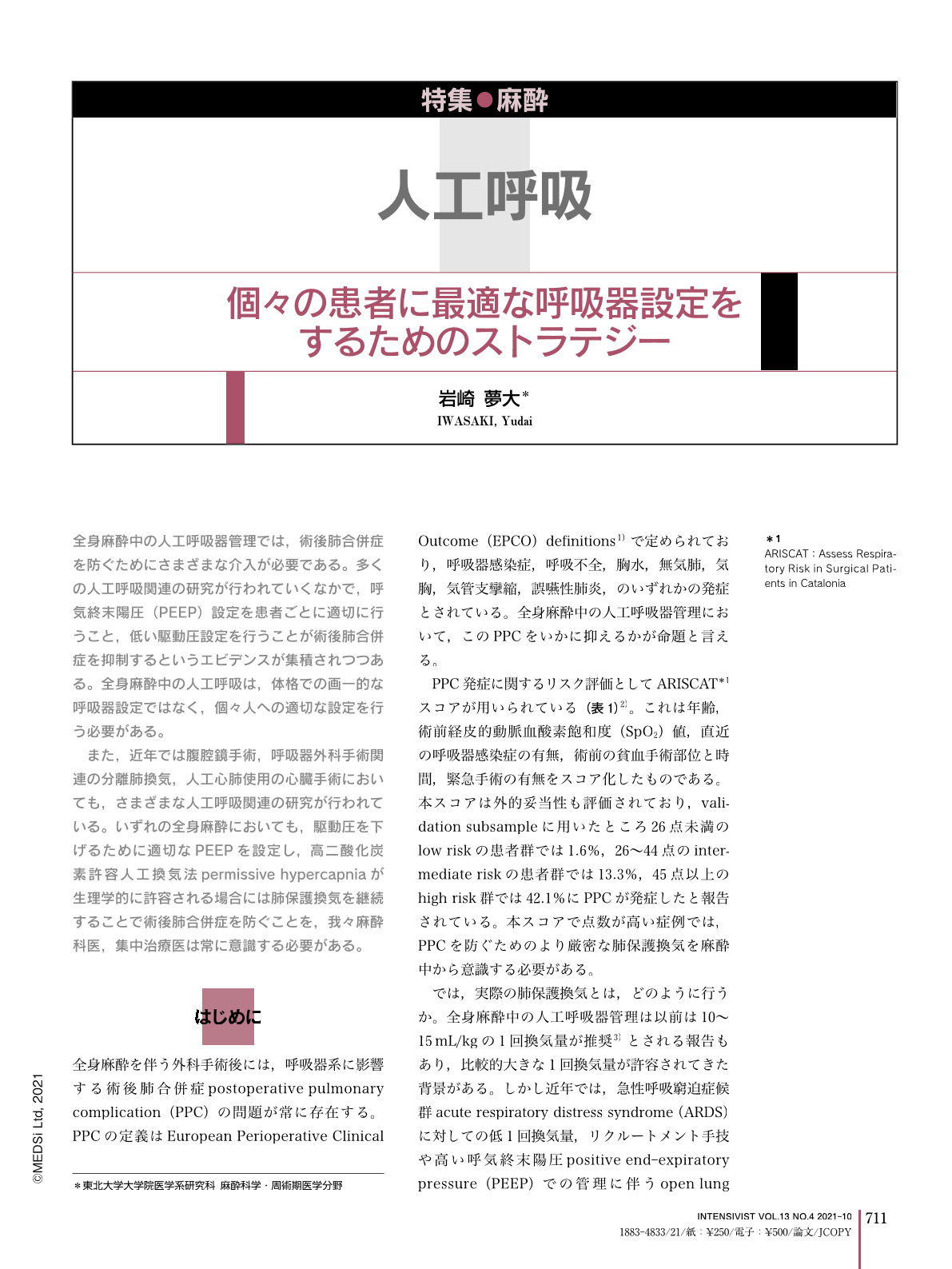Japanese
English
- 有料閲覧
- Abstract 文献概要
- 1ページ目 Look Inside
- 参考文献 Reference
全身麻酔中の人工呼吸器管理では,術後肺合併症を防ぐためにさまざまな介入が必要である。多くの人工呼吸関連の研究が行われていくなかで,呼気終末陽圧(PEEP)設定を患者ごとに適切に行うこと,低い駆動圧設定を行うことが術後肺合併症を抑制するというエビデンスが集積されつつある。全身麻酔中の人工呼吸は,体格での画一的な呼吸器設定ではなく,個々人への適切な設定を行う必要がある。
また,近年では腹腔鏡手術,呼吸器外科手術関連の分離肺換気,人工心肺使用の心臓手術においても,さまざまな人工呼吸関連の研究が行われている。いずれの全身麻酔においても,駆動圧を下げるために適切なPEEPを設定し,高二酸化炭素許容人工換気法permissive hypercapniaが生理学的に許容される場合には肺保護換気を継続することで術後肺合併症を防ぐことを,我々麻酔科医,集中治療医は常に意識する必要がある。
In general anesthesia, various ventilatory management techniques have been introduced to prevent postoperative pulmonary complications, and the evidence is accumulating that appropriate PEEP settings for each patient and lower driving pressure settings reduce the incidence of postoperative pulmonary complications. In recent years, various ventilator-related studies have been conducted in patients undergoing laparoscopic surgery, one-lung ventilation associated with respiratory surgery, and cardiac surgery using cardiopulmonary bypass. In these situations, anesthesiologists need to make efforts to prevent postoperative pulmonary complications by using appropriate PEEP settings to lower the driving pressure and by continuing lung protective ventilation when permissive hypercapnia is physiologically acceptable.

Copyright © 2021, MEDICAL SCIENCES INTERNATIONAL, LTD. All rights reserved.


